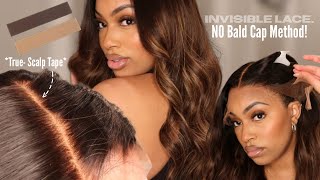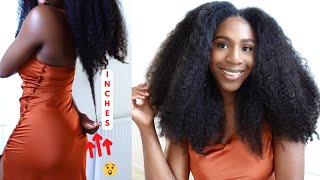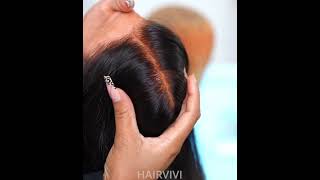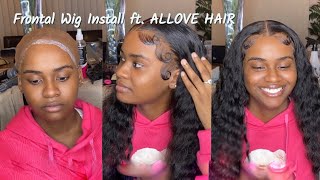How To Make Ponytail Hat
- Posted on 18 December, 2016
- Ponytail Hairstyles
- By Anonymous
CAP SUPPLIES - http://capsupplyco.com
Link to Buy Beginner Cap Kits: https://goo.gl/Snkxm1
Ponytail Cap PATTERN - http://capsupplyco.com/index.php?route...
FOLDER ATTACHMENT (1/2") - http://www.ebay.com/itm/INDUSTRIAL-2-N...
LINK to Buy Polyester/Cotton Twill(recommended for hat construction) Fabric By The Yard Here: https://goo.gl/fbfFzT
This tutorial walks you through the steps of assembling a ponytail baseball hat. We show you the detailed process, machines, fabric, tools, and more you need to make your baseball caps look professional. With this video you will be able to make your hats and caps look store bought. Be sure to follow the instructions close so you get the best results! Thank you so much for taking the time to watch our video! Be sure to LIKE, SUBSCRIBE, and COMMENT! Let us know what you think!
**** Music ****
All the music was produced by Alek Pol. Huge Thanks! Be sure to go follow him on SoundCloud!
**** PFC Social Media ****
**** Follow us on Instagram @properfitclothing ****
**** Follow us on snapchat properfit.usa ****
Brought to you by Properfit Clothing | Quality Designer Clothing Made in Grand Rapids, Michigan.
Filmed with Samsung NX1
Link to Buy the camera we use off of Amazon: https://goo.gl/oagtMv
Link to Buy Beholder DS1 Handheld Stabilizer for DSLR Camera off Amazon: https://goo.gl/Fm5iRf
I welcome back everyone today we're going to show you how to make the ponytail hat, and this is a new pattern and it's down in the description below you can download it and follow along it's fairly simple, it's kind of like the triangle hat, it's pretty much. A triangle hat with a different back more open, so you can wear a ponytail but other than that. Let'S just get started alright. So here's your pattern and the pattern is available in the description below and it's gon na look. We did a 1 similar to this, but it's a little bit different, because the back is gon na be more open, so yeah, if you're using our patterns, make sure you cut on the outside of the black line and other than that we went ahead and traced. Ours already so we're just gon na cut us out, so there you're going to want to of each of these. I cut two of these because we had, I mean fabric - is folded. Usually so I'm gon na need one of each of these two of these and just two for your brim, and if you haven't seen our other hat videos, we use a twill, you can use twill or a canvas anything, that's pretty stiff and kind of more heavyweight. But you can use pretty much any fabric you want. It'S. Some fabric is more difficult to use. I get created with they'll make what just find different fabrics. I mean we've made fabrics that we've had set of rugs before so I mean you can really do whatever you want when it comes to the fabric, it's just easier to work with the twill when you're starting so yeah keep that in mind and alright. So now you don't take your two front panels and we went ahead and put interfacing on the back and if you're looking for interfacing go to cast, apply cocom, they have professional hat making supplies and you definitely want to use this for the front. If you wanted to go for that stiff look, but if you're going for more of just crumbly look or I mean, however, you want to put it - you don't have to use it. So you're gon na take your front panels and your back panels, and so just along the top and sew these two together on that curve. All right so now we're at our double needle, and this is bias tape that were feeding through here and you can cut this out of any twill words using a standard twill and you just cut it on the bias or whatever feeder you you're using - and this Is a double fold, so it will cover up that edge on the inside and then give you a nice top stitch on the outside and if you're looking for equipment like this, send us an email and we can point you in the right direction and check cap Supply Co because I think they are getting a lot of this stuff in four different machines and dust row: machines and whatever you want to use, and if you don't have an industrial, you can still use the same thing on a domestic just get the twin needle And you can get a folder pretty much at any hobby store to do this and what you do is it's not gon na have two separate stitches. They'Ll have a cross on the inside, which it's not a big deal, if you're just making a few hats. But if you're really looking to make a lot of hats, you're gon na want to spend a little money to get a nice setup because domestic, showing machines kind of come on timed a lot. And then, if you're, using them frequently they kind of break down. But we're gon na show you how this works and, if you're looking for something like this, we can try to put you in the right direction. All right! So now you're gon na taking side panels and sew them on one at a time here, and we already went, put the right sides together and again. The pattern shows which one you want to put on which side which goes to the front and which goes to the back and yeah just so that one on to start in a little tip here, if you have trouble, sewing on the bias tape you can trim Along here, get it closer to that seam and that will help a little with putting on bias tape when you're using interfacing. Now, when you have both of those sewn on you, don't want to take your back and so that all the way across and make sure when you're sewing that you keep the center lined up with the center of the front panel. All right now we're back in the double needle sewing machine and we're gon na put more bias, tape on it and you're gon na want to do this in an X. So we want to go from your front all the way across to your back and then front again all the way across to the back. So that way you only have two strips going across meeting in the middle. It kind of reduces the amount of bulk here in the center all right. So now we're gon na seal off this back edge here and we're using a bias, tape, binder double fold, and you can do it this way or you can just fold it over and hem it. We always find this way works a little bit better and gives a nice quality. Look on the back. There'S also other ways to do this with a bottom feeder, but I'm not really gon na get into that. So I mean this is this: is the simplest way you can find all these at a store, your hobby store - and you can use this on a domestic machine whatever, like not the specific one, but you can get these for domestic. You can get them for anything. All right so now we are gon na put on the side strip, and this helps give structure along the bottom here and, as you can see, we went ahead and surged along that bottom, just to seal off the bias tape and if you don't have a serger, You can just use a zig zag on your domestic machine and that works just fine. It'S just to hold down your bias tape so that way it doesn't unravel and also keep the fabric itself from unraveling. So we're gon na put this on right along the bottom. Here and if you want any of these supplies, just go to counsel fly cocom and you can get all your pap making supplies all right. So when it comes to do with a brim, you're definitely gon na want to get a professional brim. You can try using cardboard. It doesn't really work that great just turns out looking kind of like garbage, but again cats pleco has everything you need or cheap, and what you're going to do is trace your brim and give yourself a little bit more at the bottom and then just sew. All the way around and then trim off about 1/4 inch, all the way around you can go a little bit more, a little bit less it. It really doesn't matter too much. You just want some sort of extra there. So that way the brim can sit on. One side of that and I'll show you that in a second, so when you flip it inside out and then you slide it in and then you make sure your brim is sliding on one side either the top or the bottom. Whatever you choose that way, it's looking like that and then you're going to want to take a zipper foot. Well, I like these is different, but you can use whatever you want. It just helps get really close to the edge there and you can see it's open. So that way, when you're sewing this, you can get really close to that. The inside of that brim, yeah that helps make that fabric nice and tight on that brim. Alright, so now we're going to the brim stitch - and we are using this guide right here and if you're looking for one of these they're going to be available on cap supply co.com soon, so just keep an eye out for those, and these are for domestic sewing Machines all right industrial sewing machines and they are looking to make one for a domestic, but it's kind of inconvenient, because you don't really want to keep running this on a domestic over and over, but anyways we'll show you how this works. That'S essentially how it works. We'Re not going to do all of them, but you just adjust this and you move it into your next line and then you go around again and again and until you have as many lines as you need you I mean you can do as many stitches. All the way down that you want, and it's really easy because you just adjust it move it tighten it and go again so where I can do all of them, because it's just kind of repetitive but yeah. That'S how I do it and you don't even have to put stitches on your brim if you don't want to as long as you have this nice and tight like if, in the last step, if you pull that nice and tight and you get a nice stitch Along that edge and close, you don't have to put stitches on it's more. For a look I mean it is obviously to hold down fabric, but it's up to you all right. So now we're gon na put on the sweat band and again using a professional, sweat band is the way to go. It just makes the whole process a lot easier makes your hat look way more professional and we're on a post bed sewing machine. I totally recommend using one of these if you're, if you haven't around, I mean obviously not allowing for I have around, we have a rolling foot on here. If you don't have one of these, we're gon na have a video that shows you how to put a swept in on just a regular single stitch coming up here. So look out for that. There'S ways to do it without this: we're just doing this because we have it here, it's convenient and you don't need one, though just keep an eye out for the video that's coming out, but we'll show you how to use this all right. So now we're gon na show you how to finish off the back ends here and we're gon na use a leather band strap on this one. So I mean you can try it since it's a bigger gap. You'Re gon na want to use a longer more adjustable closure, and that's why we chose the leather one. So one side you can choose whatever side you want you're just going to totally seal off. So just fold it in and then fold it up and take that side like that and sew right along there. We have one side close and the other side. You can do the same thing, but you're going to want to put your leather strap right in the center there and then so that closed then trim up your threads and and we're gon na show you how to install the buckle on there all right. So now we're gon na show you an off with the buckle on and we're using a rivet for this in the kit. When you buy them, it usually comes with a little eyelet and that's the best way to do it. We just ran out of them, so we're gon na use the rivet, so you can either use a press or pliers. You can literally you just get pliers at the hobby store and do this part and so the buckle. But we like to do it right on that open part of the sweatband and we're just showing you this, because that is the ideal spot. For this pattern to place the buckle that we found, if you like, a different spot, go for it do whatever you want, but other than that you're pretty much done we're going to show you either to the button alright. So with this die, these will soon be available on Casa FICO we're talking to them and they'll. Be there soon you place. This is just to get the fabric over the cover button and it's a quick way to do it. So you place that on there and you fold it in all around, and I mean you can just do this by hand, you don't need this and again we're just showing you a different way to do this. So once you have it all folded in, I like to put just a little bit of glue on there just to secure everything, and you can use an all-purpose glue. Then you take your bottom and press it in there and your top is good to go. And then you take your prong piece and you place that in the bottom of your die, push it all the way down and then you top cover button goes in the top of the die. And then you just place you Center, it top of the Hat press down and you're good to go and other than that you can do eyelets or vents on the side. Whatever you choose, we're not going to show that in this video. If you want to see how I do that you can go to other videos, eyelets are fairly easy to install, get creative with and do whatever you want for your openings or your ventilation on the side and other than that. You are pretty much done whatever Brandon you want to do on the front. We'Re gon na show you the quick steaming process to to make sure you get your sweat band, all nice and snug up in there. Alright, for the final step, we're using a steamer - and this is I I say this - is mandatory for making a nice-looking hat - you just want to steam all the way around. You can either use a steamer or an iron that has steam in it, but you just want to make sure you steam that sweatband, so it lays nice and flat on the inside and then steam the entire hat, while you're at it has to give the bias Tape, everything is set really nicely and we're using a hat block here. You can use it over here, just something that you can tighten on. So that way, the sweatband is on there tight and you steam all the way around and just let it sit there for a little bit and you'll see that when you pull it off, the sweat band will be nice and flat and snug up against the entire Wall inside there and other than that, that's the final step. All right. Thanks for watching, there is your ponytail cap and again the pattern it is in the description below and if you have any questions, feel free to leave comments or email us and be sure to like subscribe and we'll see you next time. You





Comments
Jarrell Boyd: So I'm interested in creating hats, especially ones for people with dreads. I am glad that I found your page. My question is for people with bigger heads naturally, such as myself, how would we adjust a pattern to size?
alek p: awesome video! everything makes sense and is easy to follow along. also the music is great! because its mine! :) thanks for featuring it!
K F: What SIZE in bias tape is used under the cap? The part that makes an X.
Cincere Gaulden: WHERE CAN I GET THAT BIAS TAPE MAKER AND GOLD PIECE THATS HOLDING IT
Fabricio: hi, i tried to contact you through your website but i never get answered ! I looking for good equipment for sewing caps. Some help will be very apreciated, I just need to be pointed on the wright direction and find good stuff. I've e-mailed you today once again, please take some time to answer thanks for all your great work
Jiya Sharma: which type of fabric u r using??
Jiya Sharma: Thanx dude
Jiya Sharma: u r a gud person ...I suppose
Jiya Sharma: I am sorry for my comment that u speak more....actually that's gud ...so sorry